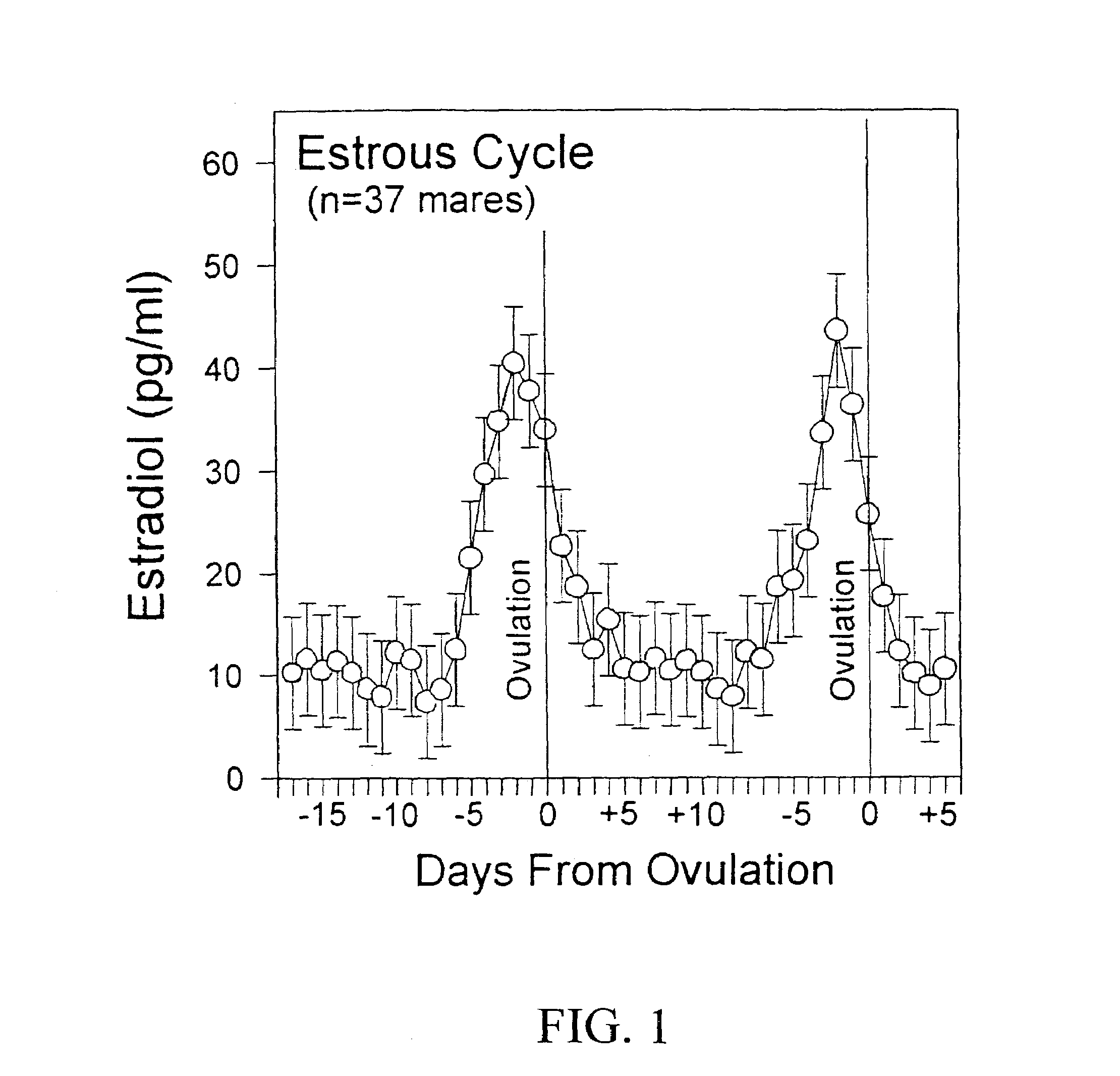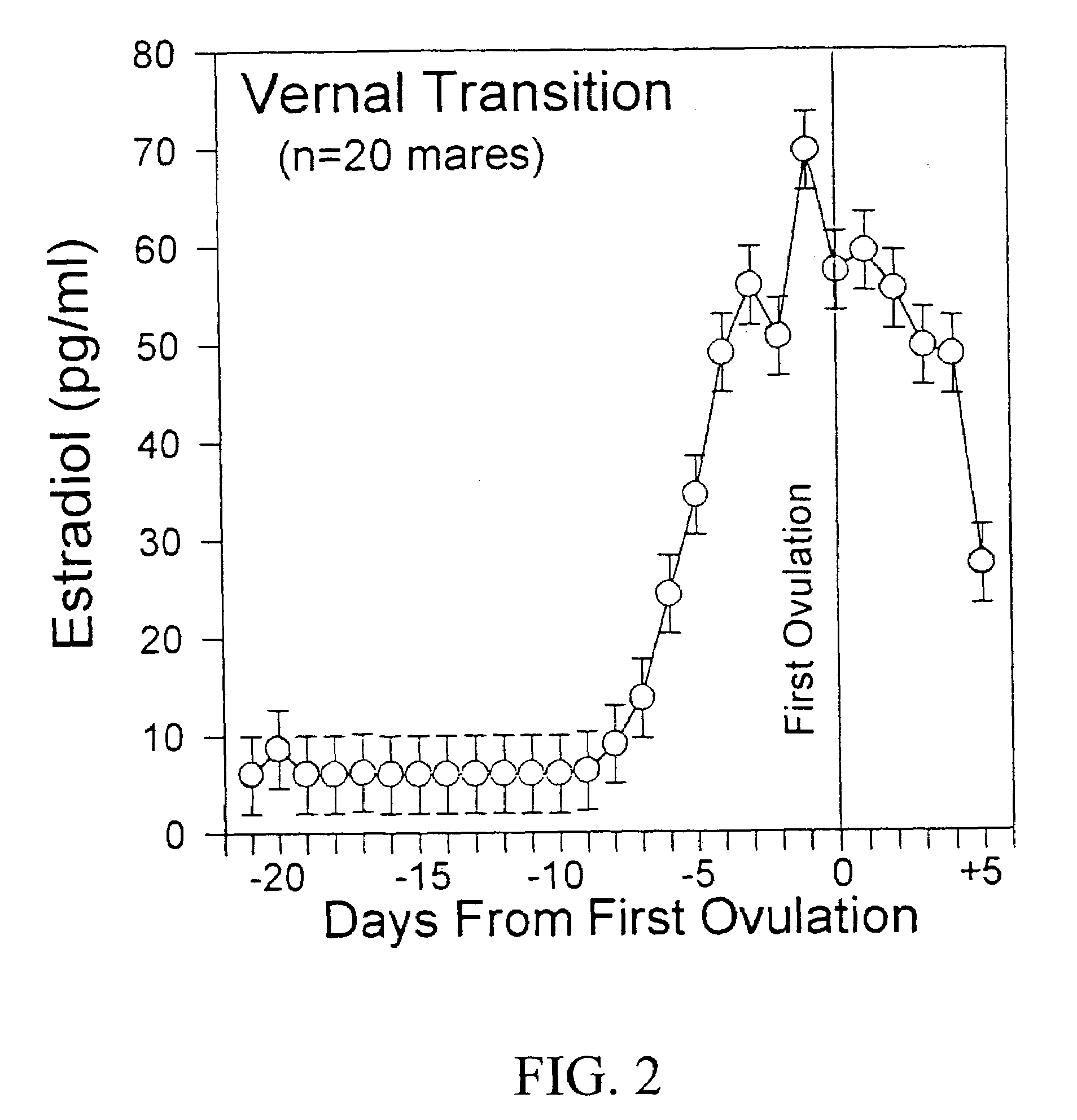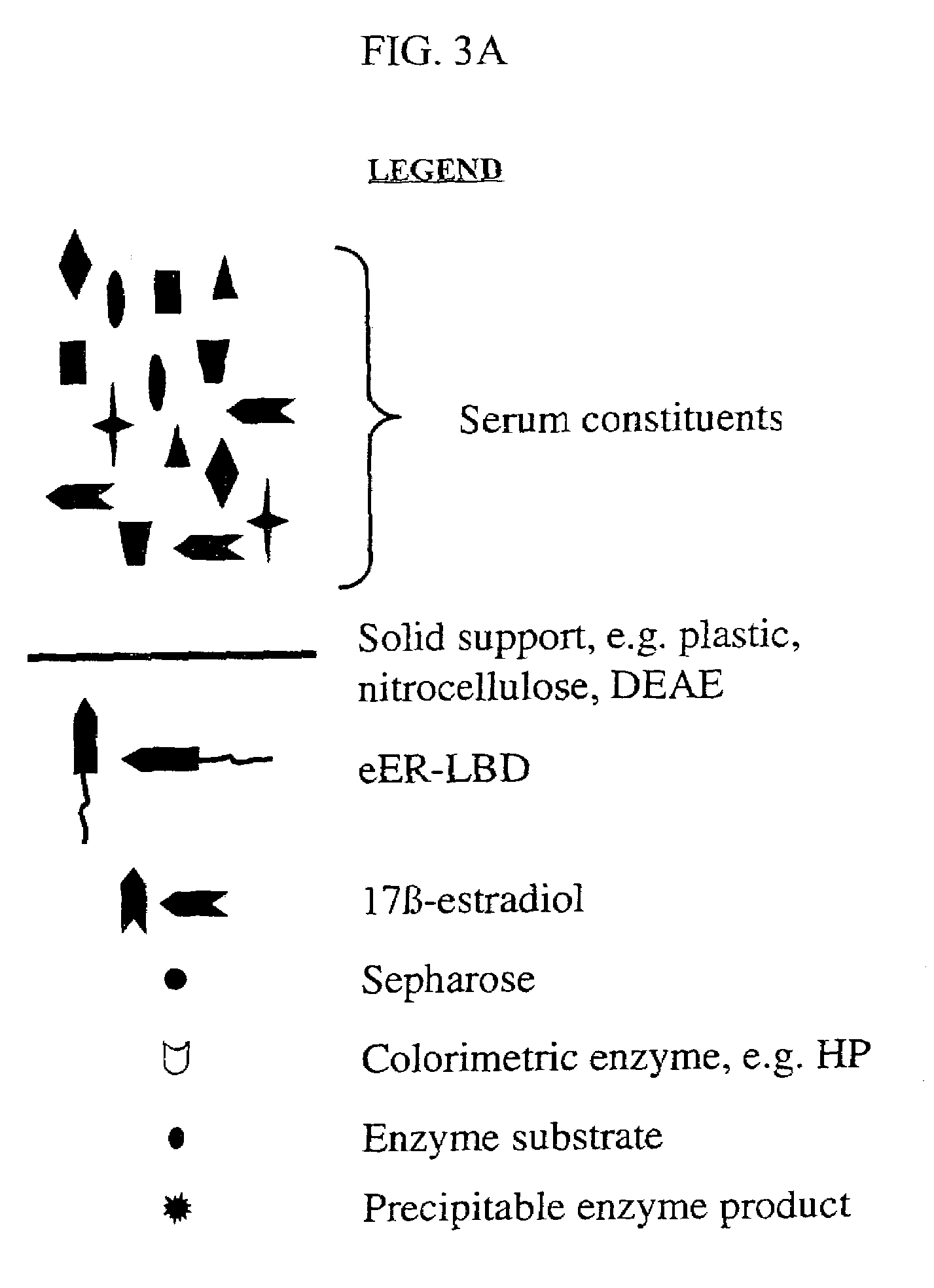Materials and methods for detection and quantitation of an analyte
a technology of analyte and material, applied in the field of assay systems, can solve the problems of inability to accurately assess the effect of antibody use, loss of supply of antibody, and very much trial and error in the process, and achieve the effect of accurate assessmen
- Summary
- Abstract
- Description
- Claims
- Application Information
AI Technical Summary
Benefits of technology
Problems solved by technology
Method used
Image
Examples
example 1
Cloning of the Equine Estrogen Receptor
[0057]The full-length equine estrogen receptor (eER; alpha-type; clone Kjm eER-13) was cloned from an estrous endometrial cDNA library (ZAP EXPRESS; Stratagene) using standard screening procedures (Sambrook et al., 1989). One microgram of eER cDNA plasmid was transformed into DH521 competent cells and plated onto LB-agar. Two independent colonies were picked and selectively grown in 200 ml of Luria-Bertani (LB) culture broth with kanamycin (100 ug / ml ). Equine ER cDNA plasmid was isolated from the growth cultures with the Plasmid Midi Kit (Qiagen). The cDNA insert (>>4000 bp) was sequenced in its entirety by the DNA sequencing core laboratory of the Interdisciplinary Center for Biotechnology Research (ICBR) at the University of Florida. Nucleotide sequence comparisons were performed with the BLAST feature of the National Center for Biotechnology Information, as shown in Table 1. The eER nucleotide sequence was submitted to GenBank and assigned ...
example 2
PCR Cloning of the eER Ligand Binding Domain
[0058]A cDNA fragment coding for the eER ligand binding domain (LBD; amino acids 301–564 based on the amino acid numbering of the full-length receptor sequence at Accession No. GI:4325290) was generated by PCR utilizing th eER cDNA plasmid as template. Oligonucleotides that flank the LBD of the estrogen receptor were designed and synthesized by Gemini Biotech, Ltd. and included XmaI sites at the 5′ ends for future subcloning steps. Following 30 cycles of PCR (95° C. for 1 minute, 55° C. for 2 minute, 72° C. for 2 minutes), 10 μl of the PCR reaction was separated on a 1.8% agarose gel to confirm amplification of the correct product size (840 bp). One μl of the PCR reaction was ligated to pCR 2.1 cloning vector (Invitrogen) using the TA cloning principles. The ligation reaction (3 μl) was transformed into One Shot competent cells (Invitrogen) and plated onto LB-kanamycin agar plates that contained X-gal. Ten randomly selected recombinant (wh...
example 3
Subcloning into an Expression Vector
[0059]After confirming no errors were generated by PCR and that the coding sequence is in frame, the nucleotide sequence which codes for eER-LBD was released from the pCR 2.1 vector by digesting with XmaI and gel purifed. The eER-LBD coding sequence was then subcloned into a pBAD expression vector which had been modified to include a pectate lyase secretion signal (pBADPL; Gemini Biotech, U.S. Pat. No. 5,576,195). Furthermore, the pBADPL vector added a 6X-histidine tag and a termination codon to the 3′ end of the subclone. Five μl of the ligation reaction was transformed into the E.coli strain JM103 (ATCC) that had been rendered competent using CaCl2 (Sambrook et al., 1989). After a 30 minute incubation on ice, cells were heat shocked for 1 minute at 42° C.; then grown for 1 hour at 37° C. in SOC media with shaking (250 rpm). Transformation reactions were plated onto LB-ampicillin plates and grown overnight at 37° C. Twenty single recombinant colo...
PUM
| Property | Measurement | Unit |
|---|---|---|
| concentrations | aaaaa | aaaaa |
| concentration | aaaaa | aaaaa |
| total volume | aaaaa | aaaaa |
Abstract
Description
Claims
Application Information
 Login to View More
Login to View More - R&D
- Intellectual Property
- Life Sciences
- Materials
- Tech Scout
- Unparalleled Data Quality
- Higher Quality Content
- 60% Fewer Hallucinations
Browse by: Latest US Patents, China's latest patents, Technical Efficacy Thesaurus, Application Domain, Technology Topic, Popular Technical Reports.
© 2025 PatSnap. All rights reserved.Legal|Privacy policy|Modern Slavery Act Transparency Statement|Sitemap|About US| Contact US: help@patsnap.com



